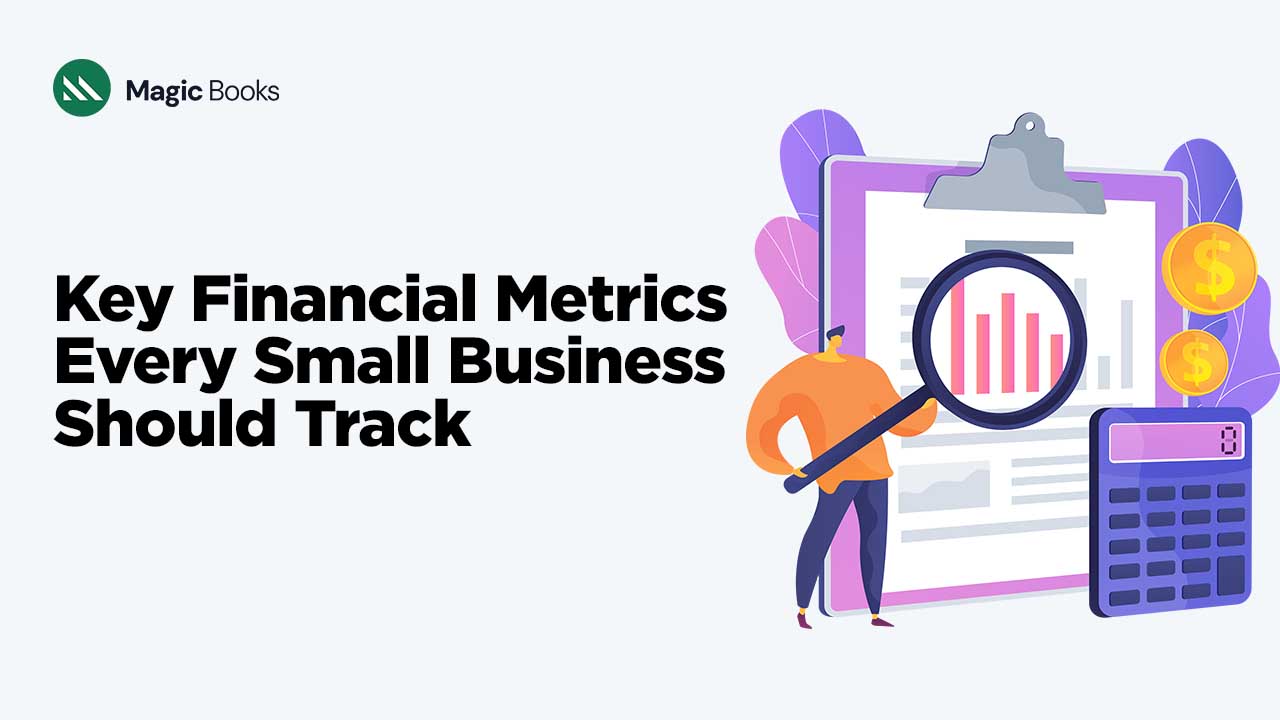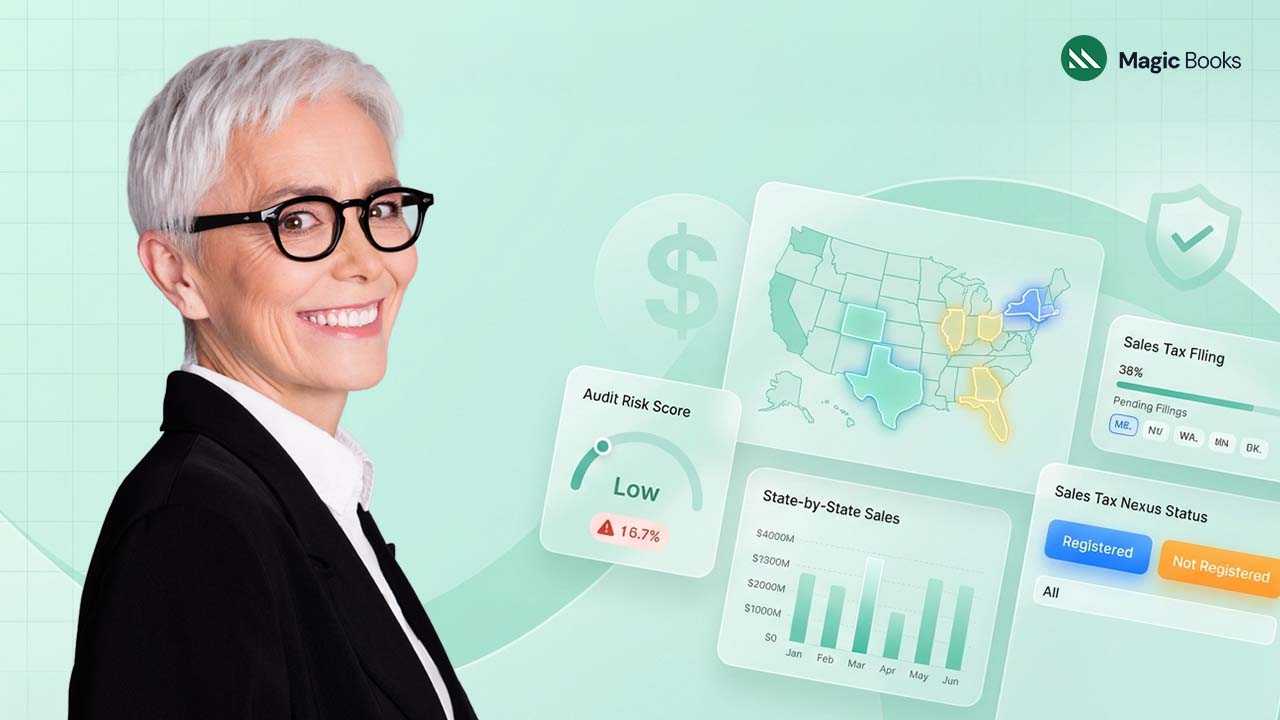Running a small business is as challenging as piloting a ship in unpredictable seas. Let’s take an example of fictitious SaaS companies like CloudTasker, which offer project management software to other small businesses. Thus, understanding the key financial metrics is necessary for sustained success. Briefly speaking, think of these metrics as a tool to ensure your business, just like CloudTasker, sails in the right direction.
This blog will guide you through the key financial metrics that each small B2B SaaS business, just like CloudTasker, should track in order to ensure not only survival but growth in the long run.
Metrics and KPIs
Since a B2B SaaS company such as CloudTasker entirely depends on metrics and KPIs, it can achieve its goal of understanding how effective the business is. For instance, CloudTasker tracks the number of month after month recurring revenue MRR, how it managed its customer acquisition cost CAC, and how much its customers will spend with them in their lifetime, that is, customer lifetime value CLV. These numbers allow the team to know how much money they are generating and if they are getting good at acquiring new customers, as well as how much value every customer contributes with time.
Metrics give the CloudTasker a live compass reading of how it is doing. However, most of the KPIs that he targets for—like churn rate and net revenue retention—are to be called the North Star, keeping CloudTasker gauged to the real long-term objectives, such as increasing customer retention and boosting lifetime value.
Revenue
For CloudTasker, revenue is the wind that drives the company forward. Since the company works on a subscription model, MRR (Monthly Recurring Revenue) would be the most important metric for them-that is, consistent revenue CloudTasker earns from customers every month.
MRR is calculated using this formula:
MRR = Number of Subscribers x Average Revenue Per User (ARPU)
For CloudTasker, tracking MRR helps them understand if they are growing, how much money they can invest in product development or marketing, and whether they need to adjust pricing models. For example, if MRR is increasing, it’s a sign that more businesses are subscribing to CloudTasker, either through new sign-ups or upselling existing customers to higher-priced plans.
Expenses
Running a SaaS business like CloudTasker naturally involves some costs. They range from hiring employees to work on development and customer support to higher cloud hosting fees and marketing spend. All these are currents pushing against the ship of CloudTasker, and if not kept under strict control, it will slow the growth rate of the organization.
CloudTasker’s expenses break down into two main categories:
- Operating Expenses: Salaries, cloud infrastructure (AWS or Azure), customer support, and software licenses.
- Non-Operating Expenses: Interest on any business loans or financing.
For a SaaS company like CloudTasker, managing expenses effectively—such as optimizing cloud costs and automating customer support through chatbots—can directly affect profitability. By closely monitoring and controlling these costs, CloudTasker ensures that the current doesn’t push them backward.
Net Income
Net income, often referred to as the “bottom line,” is the ultimate measure of profitability for CloudTasker. After accounting for all expenses, taxes, and other costs, net income is what’s left over. If CloudTasker’s net income is consistently positive, they can reinvest in scaling up their platform, hiring more developers, or launching new marketing campaigns.
The formula for net income is:
Net Profit = Revenue – Total Expenses
For CloudTasker, a positive net income means they are not just growing in terms of customer acquisition but also running an efficient and sustainable business. If the net income dips, the CloudTasker team knows it’s time to reassess expenses or adjust pricing strategies to steer back toward profitability.
Cash Flow
For a SaaS business like CloudTasker, cash flow is the lifeblood that keeps the operation going. Cash flow tracks how much money is moving in and out of the business, and without healthy cash flow, even a high-growth SaaS company can face difficulties in paying employees, investing in new features, or handling customer requests.
CloudTasker needs to closely monitor two key aspects of cash flow:
- Positive Cash Flow: Ensures they have enough money to cover day-to-day operations.
- Negative Cash Flow: Signals they may need to raise additional capital or reduce expenses.
The formula for CloudTasker’s operating cash flow is:
Operating Cash Flow = Net Income + Non-Cash Expenses – Increase in Working Capital
Even if CloudTasker proves to be a profitable concern, poor cash flow management—such as delayed payments from enterprise clients—would squeeze the business. So, monitoring cash flow and preparation of contingency plans is essential for long-term stability.
Working Capital
Working capital is one of the most critical factors for the day-to-day running of a developing SaaS company, such as CloudTasker. It is an integral determinant for smooth running. Working capital refers to the ability of CloudTasker to meet its short-term obligations, including fees for cloud hosting, software licenses, or marketing contractors.
The formula for working capital is:
Working Capital = Current Assets – Current Liabilities
CloudTasker monitors its working capital so that they will have sufficient liquid assets for current expenses. With positive working capital, CloudTasker will be out of cash crunch situations, and it will give them flexibility in their financial capacity to attend to unexpected costs or capitalize on growth opportunities, such as introducing new features or marketing campaigns.
Break-Even Point
Like any SaaS business, CloudTasker needed to reach its break-even point before it could start making a profit. The break-even point is the moment when CloudTasker’s revenue covers all of its fixed and variable costs, meaning the company is no longer operating at a loss.
The formula for break-even point is:
Break-Even Point = Fixed Costs / (Sales Price Per Unit – Variable Cost Per Unit)
CloudTasker’s team used this metric early on to determine when the company would become profitable. By calculating their break-even point, they set realistic customer acquisition goals and pricing strategies that ensured steady growth. Knowing when they hit this point helped CloudTasker plan for the next phase of scaling.
Profit Margins
CloudTasker tracks its profit margins to measure how efficiently the company is turning revenue into profit. As a SaaS business, CloudTasker primarily focuses on two profit margin ratios:
- Gross Profit Margin: Shows how much revenue is left after covering the cost of providing the service (e.g., cloud infrastructure, third-party integrations).
Gross Profit Margin = (Revenue – COGS) / Revenue x 100 - Net Profit Margin: Accounts for all operating expenses and shows how much profit remains for every dollar of revenue.
Net Profit Margin = (Revenue – Expenses) / Revenue x 100
For CloudTasker, tracking profit margins helps the team understand if they’re running an efficient operation. If profit margins dip, they can assess if pricing strategies need to be adjusted or if there’s an opportunity to optimize costs, such as automating certain aspects of customer support or reducing marketing spend.
Accounts Receivables and Payables
As a B2B SaaS company, CloudTasker often deals with enterprise clients that operate on net 30 or net 60 payment terms. This delay in payments affects CloudTasker’s accounts receivable aging—which tracks how long it takes for customers to pay their invoices. A high accounts receivable aging means CloudTasker’s cash flow could be strained, even if revenue is strong.
Similarly, accounts payable aging helps CloudTasker manage how quickly they pay their own bills. Tracking this ensures that CloudTasker doesn’t drain its cash reserves by paying expenses too quickly.
Customer Metrics
Finally, CloudTasker must keep a close eye on two critical customer-related metrics:
- Customer Acquisition Cost (CAC): This tells CloudTasker how much they’re spending to acquire each new customer through marketing and sales efforts.
CAC = (Cost of Sales + Cost of Marketing) / New Customers Acquired - Churn Rate: Measures how many customers stop using CloudTasker over a period of time. High churn rates could indicate dissatisfaction or stiff competition from rivals.
By tracking these metrics, CloudTasker ensures that their customer acquisition strategies are cost-effective and that they’re maintaining strong relationships with existing customers to minimize churn.
Conclusion:
For CloudTasker, or for that matter, any B2B SaaS business, it will show a very smooth ride in tracking such key financial metrics. It includes MRR and cash flow, customer acquisition cost, besides churn rates in order to breach the very critical issues associated in the course of running the business-cash flow and profitability rather than thinking it’s a smooth sailing.
By tracking the same metrics quarter by quarter, CloudTasker has managed to remain ahead of challenges in making the right decisions to continue to deliver value towards customers. Ditto for your B2B SaaS business.



